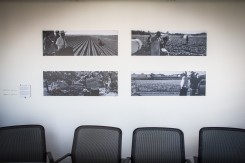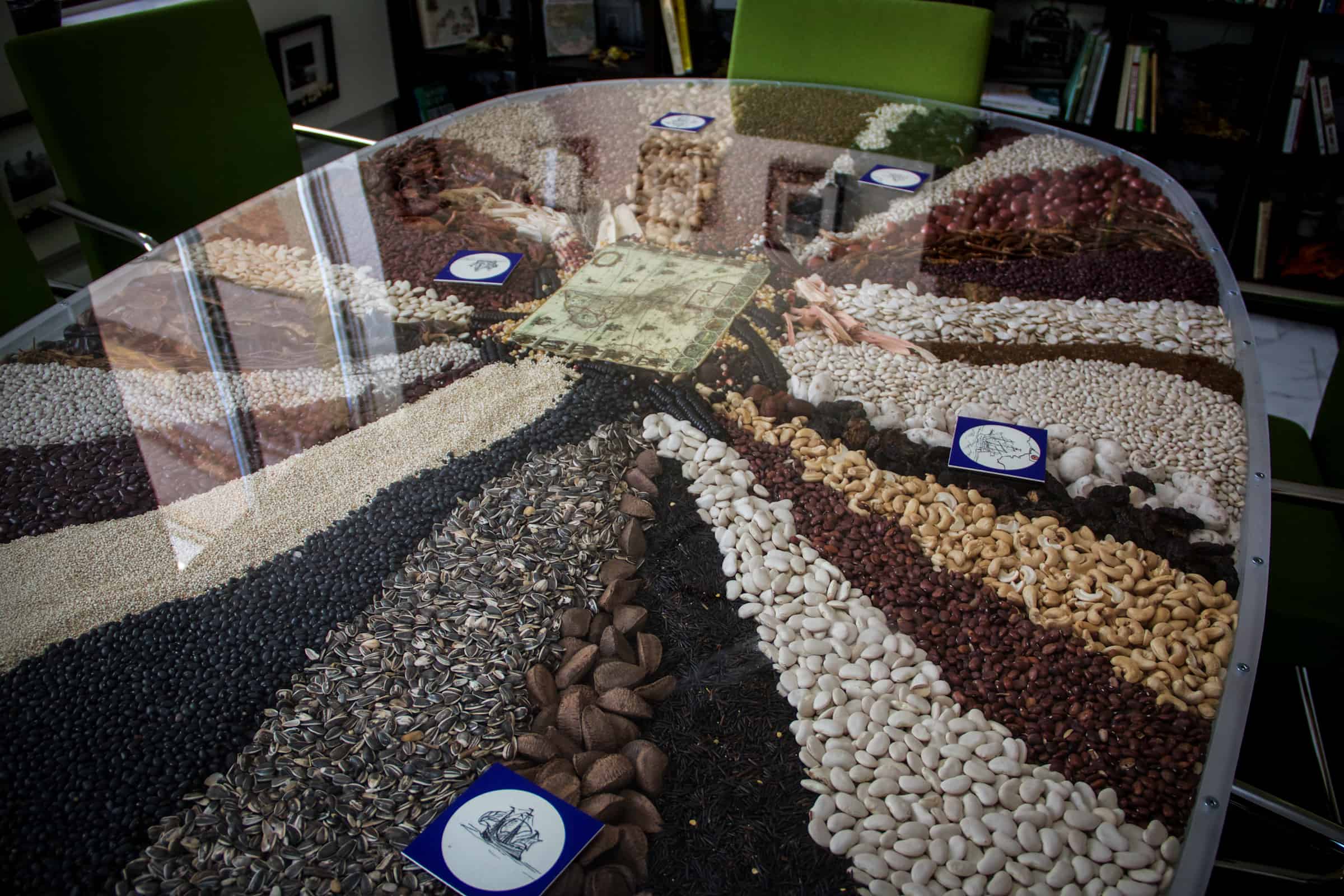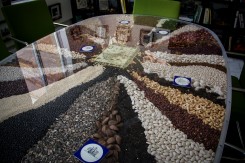Imagine someone in your proximity eating a banana. Not strikingly odd, is it? The “Bread and Butter” exhibit at the Justina M. Barnicke Gallery showcases pieces that explore what is, in fact, problematic about this image and other issues concerning contemporary food supply in the Western World.
Curator Sandy Saad spent about eight months looking for and approaching artists who engage with the very broad topic of food, a topic chosen by the Jackman Humanities Institute.
 “A lot of the themes of the exhibition came from the work of the artists,” she says. “Many contemporary artists were looking at industrialized food systems, the relationship between food and money, how accessible our food is now to certain people. Those were the ideas that came together and that is why we chose the title ‘Bread and Butter.’”
“A lot of the themes of the exhibition came from the work of the artists,” she says. “Many contemporary artists were looking at industrialized food systems, the relationship between food and money, how accessible our food is now to certain people. Those were the ideas that came together and that is why we chose the title ‘Bread and Butter.’”
Six artists in total were selected, all challenging the status quo with their work. Though the pieces differ in medium, style, and point of focus, they are all straight-forward in what they want to get across: that issues surrounding food are not hard to see, we just need to make an effort to look a bit further than our own kitchen table.
For example, to get back to the banana, Ian Baxter’s photographic print Still Life with Winter Vista sets a table lusciously abundant with tropical fruits against the backdrop of the Canadian winter landscape. Saad explains it references the Dutch Vanita style, “which exposes the mortality of things we live with.” The juxtaposition of the harsh winter environment with the foreign fruit “questions the availability of food, how we don’t even think about it.”
In a more humorous take on the issue, performance artist Christian Jankowski, fully equipped with bow and arrow, literally hunts for bargains at a Berlin supermarket in a looped video installation titled The Hunt. “He did this for a series of days at different places, until he got kicked out,” Saad says.
But good comedy always includes an element of tragic truth, and in The Hunt, the tragedy lies in the fact that nowadays, the arrow has become entirely obsolete. Industrialized food systems dissociate us from what we consume; today all that is needed to access our food is, at most, a pair of scissors to cut open the packaging of a store-bought product.
Carole Condé and Karl Beveridge, on the other hand, shift focus to migrant farmers in Southern Ontario with their photo-shopped print series Salt On the Earth. By personifying Mother Earth in scenes of contemporary farming, they expose the entwined structure of corporate impact, environmental damage, and mistreatment of workers in the capitalist system.
Trained in Indian miniature painting, Cole Swanson walks a similar path with his series of narrative pictures, though his gaze extends to other provinces. His stunningly intricate paintings, with ornamentations inherent to the area he depicts, further draw a link between corporations and cultural identity, a theme most evident in Roadside Monument: Portage La Prairie. Here, two happy factory workers, who clearly resemble two fast-food chain icons, stand on top of Manitoba’s Simplot Potato Processing Plant, holding up a giant potato. “The company produces fries for Wendy’s and McDonald’s and in the area everybody works there,” Saad explains.
Transcend: Meeting Room by Ron Benner is an installation that inhabits a whole room and was created specifically for the exhibition. Saad says: “The artist originally started out as an agricultural engineer but found there were so many things ethically wrong with this that he quit.”
Henceforth, Benner has been travelling the world to trace where our food comes from (apparently Latin America, for the most part). Benner’s installation seems intended to resemble his office space, as the room is stacked with all his research books and photographs taken of places he visited. A gorgeous tabletop centerpiece not only provides food for thought, but is also quite literally filled with food; dried corn, nuts and seeds surround an old world map placed at the table’s center.
Transcend: Meeting Room brings us back to the kitchen table, although this one is quite different from what most of us are accustomed to. Benner’s table reminds the exhibit’s visitors of the link between imperialism and the spread of food — seeds that were taken from one place and then grown in another — and why it is that today, in cold, cold Canada, we can expect to have our banana every morning, without pausing for a second to think about it.



